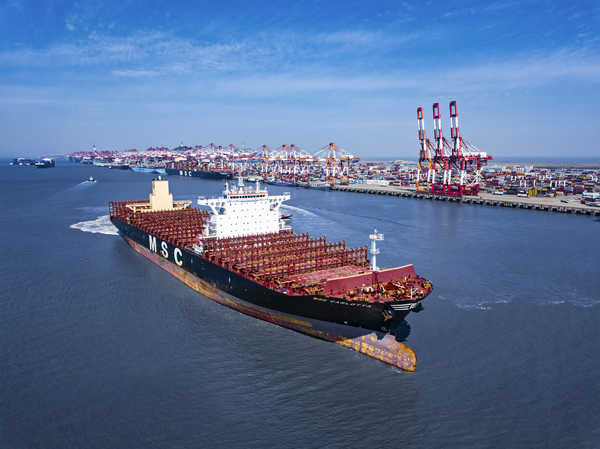Container ships will have strong demand for green fuels in Asia – Silk Alliance
A group of shipping firms, engine manufacturers and financial institutions have set out to develop a modern Silk Road to boost uptake and production of green marine fuels.

PHOTO: MSC container ship departing the Port of Shanghai. Getty Images
The Silk Alliance, named after the ancient Silk Road that connected the West with the Middle East and Asia, envision a “highly scalable” green corridor for container ships sailing in Asia.
The alliance is made up of major shipowners, including Mediterranean Shipping Company (MSC) – the world’s biggest container ship company by TEU - Pacific International Lines (PIL), Wan Hai Lines, X-Press Feeders and Yang Ming Marine Transport.
“We hope that through our participation in The Silk Alliance, we can demonstrate our commitment to decarbonising our fleet, and at the same time working with other stakeholders to establish regional green corridors for feeder shipping utilising low carbon fuel or technology,” PIL general fleet manager Goh Chung Hun said.
The partners say they want to send a strong signal to marine fuel suppliers, ports and governments that there will be future demand for green fuels.
These signals can contribute to lower investment risk and spur uptake of carbon-neutral fuels, they argue.
They have not highlighted any specific green fuels or exactly which ports and countries the corridor will connect. But they say they will tailor a fuel transition strategy to container ships and work with other industry participants to align the project with commitments made during last year’s COP26 climate summit.
The project is spearheaded by the Lloyd’s Register Maritime Decarbonisation Hub.
Shipyard Keppel Offshore & Marine, bunker logistics supplier Singfar International, engine manufacturer Wartsila, ship manager Wilhelmsen Ship Management and financial institutions Asian Development Bank and ING also form part of the alliance.





